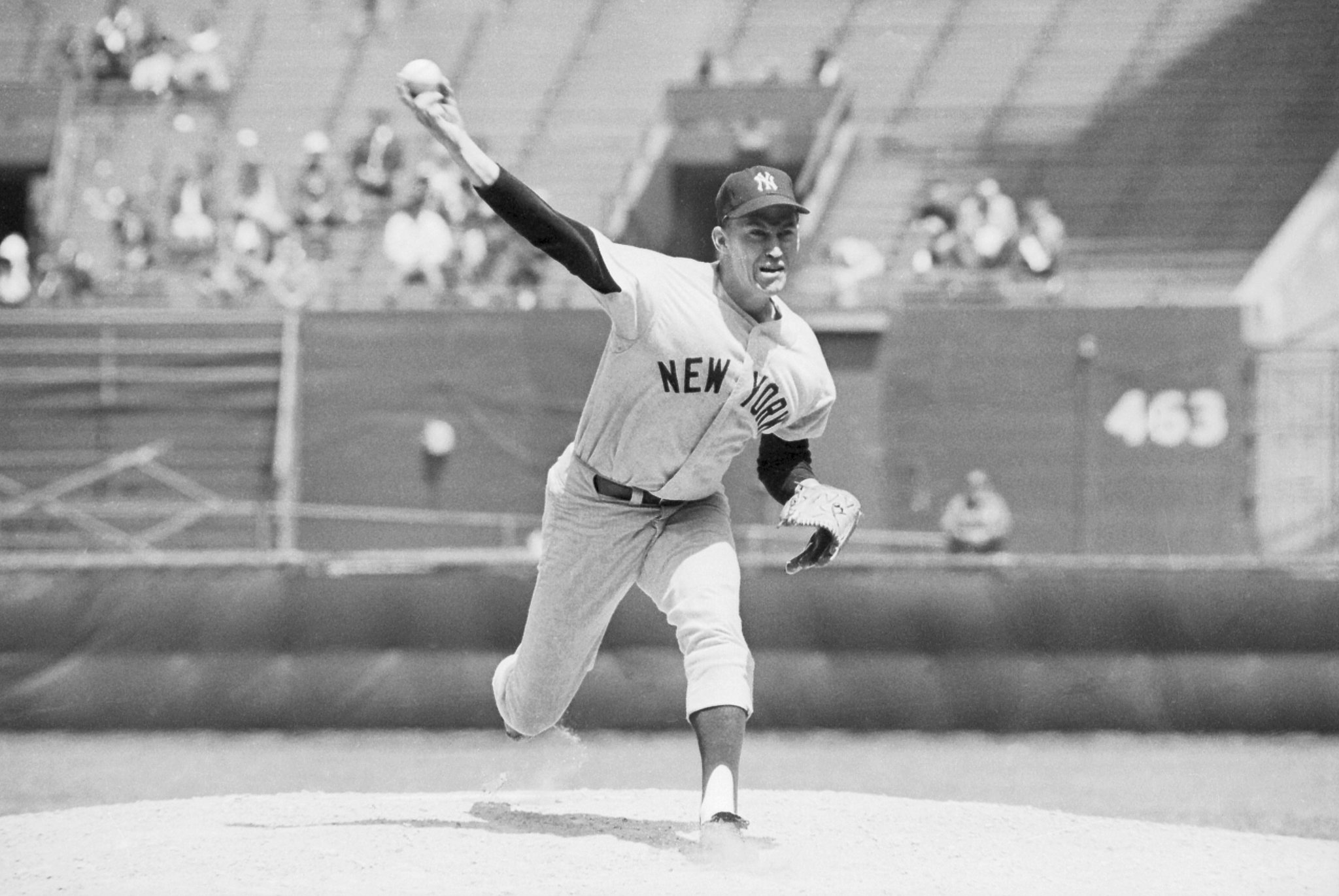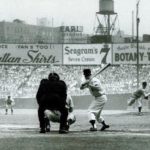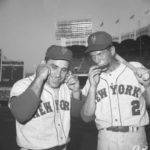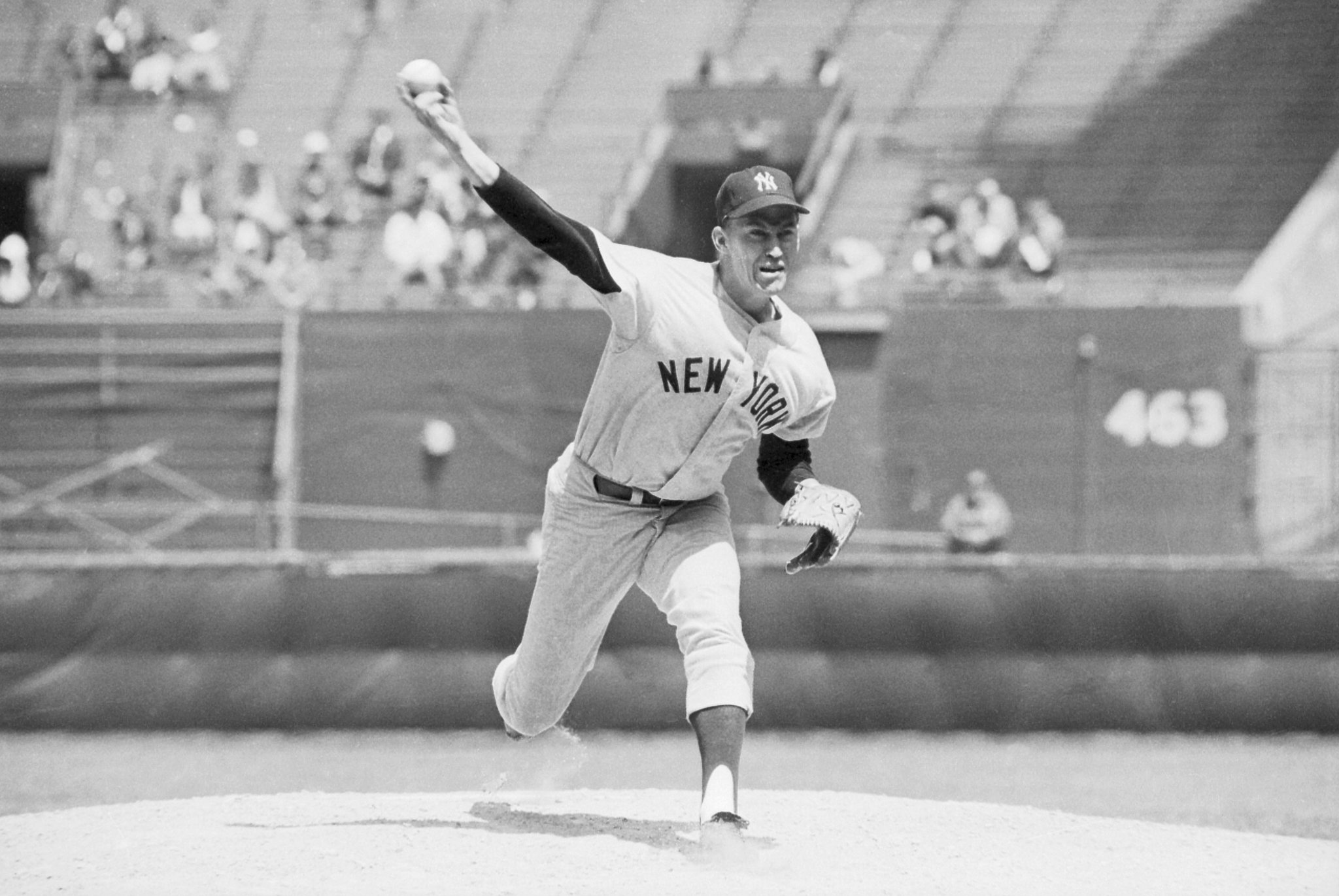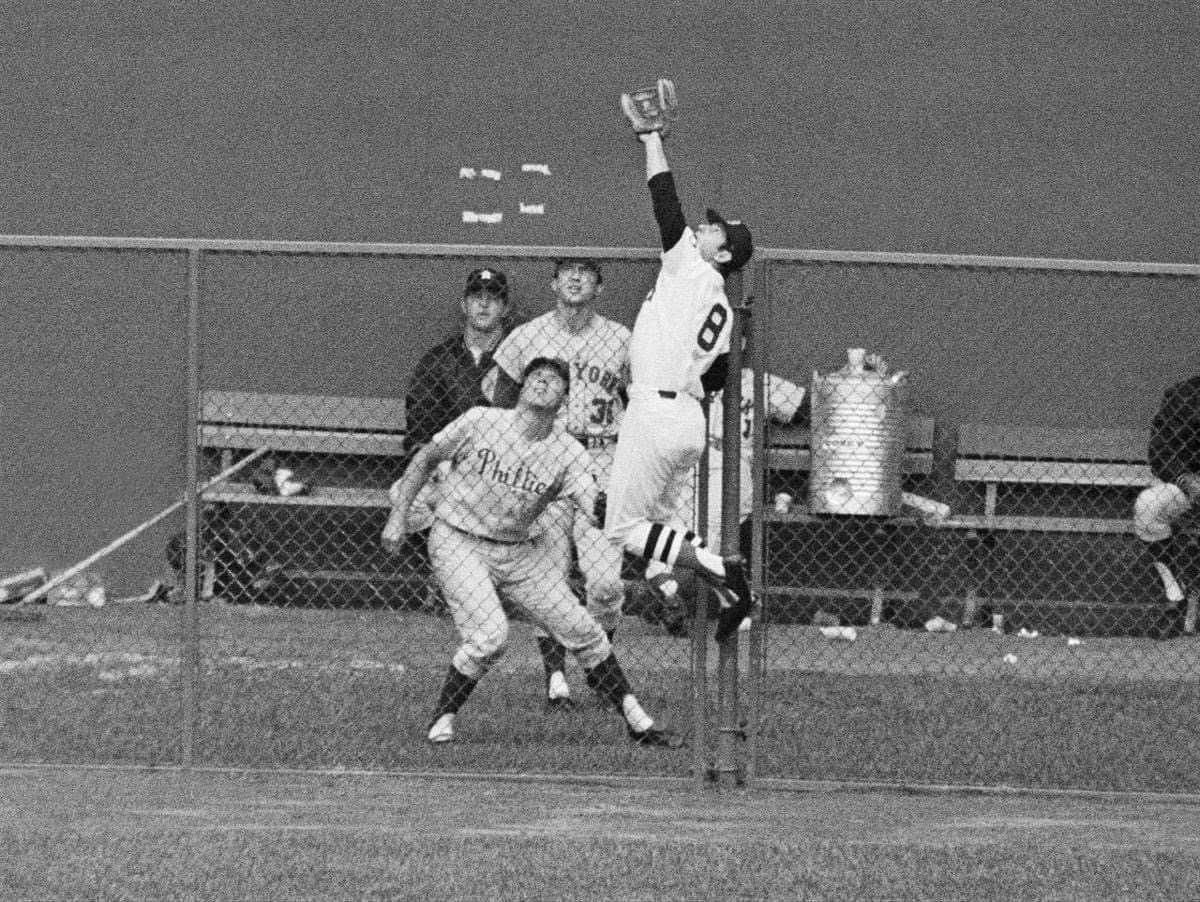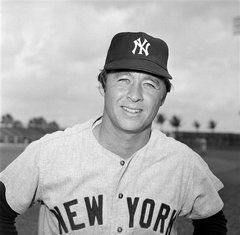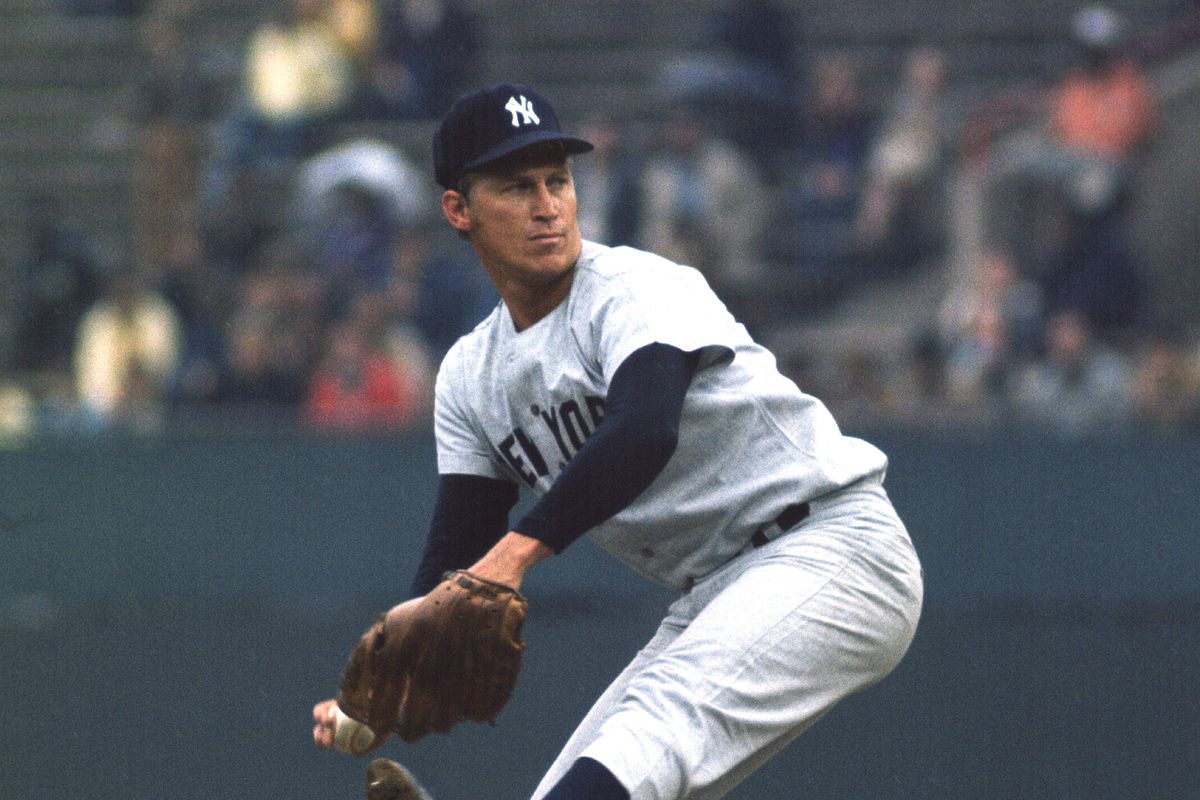Mel Stottlemyre Stats & Facts
Mel Stottlemyre
Position: Pitcher
Bats: Right • Throws: Right
6-1, 178lb (185cm, 80kg)
Born: November 13, 1941 in Hazleton, MO
Died: January 13, 2019 in Seattle, WA
Buried: Sunset Hills Memorial Park, Bellevue, WA
High School: Mabton HS (Mabton, WA)
School: Yakima Valley Community College (Yakima, WA)
Debut: August 12, 1964 (12,281st in major league history)
vs. CHW 9.0 IP, 7 H, 1 SO, 1 BB, 2 ER, W
Last Game: August 16, 1974
vs. CHW 0 AB, 0 H, 0 HR, 0 RBI, 0 SB
Full Name: Melvin Leon Stottlemyre
Relatives: Father of Mel Stottlemyre, Todd Stottlemyre
Nine Other Players Who Debuted in 1964
Tony Perez
Bert Campaneris
Don Kessinger
Paul Blair
Lou Piniella
Phil Niekro
Luis Tiant
Mel Stottlemyre
Mickey Stanley
All-Time Teammate Team
Coming Soon
Notable Events and Chronology
Perhaps the most overlooked and underrated pitcher in the rich history of the New York Yankees, Mel Stottlemyre had the misfortune of spending virtually his entire career pitching for either losing or mediocre teams. After first joining the Yankees in August of 1964, Stottlemyre excelled during the final two months of the season, enabling New York to edge out Chicago and Baltimore for the American League pennant. However, the 1964 World Series turned out to be Stottlemyre’s only trip to the postseason, since the Yankees found themselves mired in mediocrity the remainder of his career. New York finished with a losing record in five of Stottlemyre’s 10 remaining years with the team, seriously contending for the pennant just once. Through it all, though, the slender right-hander remained one of the American League’s top hurlers, earning All-Star honors five times, surpassing 20 victories on three separate occasions, and serving as the ace of New York’s pitching staff.
Biography:
Born in Hazleton, Missouri on November 13, 1941, Melvin Leon Stottlemyre grew up in the state of Washington, graduating from Mabton High School, before attending Yakima Valley Community College. After signing with the Yankees as an amateur free agent in 1961, Stottlemyre spent parts of four seasons in the New York farm system, excelling at every level. The right-hander established himself as arguably the team’s top prospect in 1964 when he earned International League Pitcher of the Year and Minor League Player of the Year honors while at Richmond. Stottlemyre posted a record of 13-3 and an ERA of 1.42 over the season’s first four months, prompting the Yankees to summon him to the big leagues in early August. In the midst of a pennant race, New York desperately needed another reliable starter to complement Whitey Ford, Jim Bouton, and Al Downing. The 22-year-old rookie quickly demonstrated he was up to the task, handling himself like an experienced veteran after being inserted into the starting rotation upon his arrival. Following his debut on August 12, Stottlemyre proceeded to compile a 9-3 record in his 12 starts, while also posting an outstanding 2.06 ERA. His outstanding performance helped the Yankees capture their fifth consecutive American League pennant.
Apparent immediately upon Stottlemyre’s arrival was the exceptional movement he had on his sinkerball. While he also featured an excellent slider and an above-average fastball, Stottlemyre’s sinker looked like it fell right off a table, breaking almost straight down as it approached home plate. Correspondingly, the young right-hander induced an inordinate number of ground-ball outs when he had his best stuff. Since the downward movement of his sinkerball tended to increase when his arm grew tired, he also seemed to get stronger as the game progressed.
Also evident from the very beginning was Stottlemyre’s tremendous poise. The youngster always maintained his composure, conducting himself like a wily veteran in the midst of an extremely close pennant race. The maturity with which Stottlemyre carried himself convinced Yankee manager Yogi Berra to hand him the ball three different times in the World Series against the Cardinals. Starting Game Two against Bob Gibson, Stottlemyre went all the way in New York’s 8-3 victory. He left Game Five for a pinch-hitter in the bottom of the seventh inning, trailing Gibson by a score of 2-0. Although New York eventually lost the game in extra innings, Stottlemyre avoided being charged with the loss when Tom Tresh tied the contest in the bottom of the ninth inning with a two-run homer. Stottlemyre then found himself pressed into duty on only two days’ rest in Game Seven when Whitey Ford’s ailing shoulder left him unable to start the contest for New York. The rookie did his best to keep the Yankees in the game, but he ended up taking the loss to Gibson and the Cardinals after he surrendered three runs in the fourth inning. Little did Stottlemyre and the rest of the Yankees know at the time that he would never again make a postseason start for the club. Yet, no matter how poorly New York played throughout the remainder of his career, Stottlemyre continued to stand out as a true professional, and as a link to the championship clubs the team fielded in the past.
The Yankees finished sixth in the American League in 1965, but Stottlemyre compiled a record of 20-9 and an ERA of 2.63 in his sophomore campaign. He placed second in the league in wins and shutouts (4), and he topped the circuit with 291 innings pitched and 18 complete games. Major League Baseball presented only one Cy Young Award to the best pitcher in both leagues combined at the time, and Sandy Koufax received the honor for the third time in his final year with the Dodgers. Stottlemyre, though, likely would have been named the recipient in the American League had the junior circuit presented its own award.
Stottlemyre pitched much less effectively in 1966, losing a league-leading 20 games for the last-place Yankees. However, he rebounded the following year, compiling a 2.96 ERA and finishing 15-15, despite receiving little in the way of run-support from ninth-place New York. The right-hander had two of his finest seasons in 1968 and 1969, surpassing 20 victories both years despite New York’s anemic offense. Stottlemyre finished 21-12 with a 2.45 ERA in the first of those seasons, while throwing 19 complete games, 279 innings, and six shutouts. He followed that up by going 20-14 in 1969, with a 2.82 ERA, 303 innings pitched, and a league-leading 24 complete games.
Stottlemyre also pitched well in 1971 and 1973, but poor run-support from his teammates enabled him to compile a combined record of only 32-28 those two years. In fact, a weak Yankee lineup resulted in Stottlemyre posting a career record of just 164-139, a mark that doesn’t come close to reflecting just how effectively he pitched for the team much of the time.
Nevertheless, Stottlemyre still amassed some fairly impressive numbers. In addition to winning more than 20 games three times, he surpassed 15 victories on four other occasions. He ended his career with an outstanding 2.97 ERA. Stottlemyre threw at least 250 innings in each of his nine full seasons, tossing as many as 303 frames in 1969. He completed at least 18 games five times, threw at least six shutouts three times, and compiled an ERA below 3.00 a total of six times. In addition to being named to the American League All-Star Team five times, he earned one selection to The Sporting News All-Star Team (1965). Stottlemyre finished tenth in the league MVP voting in 1968, and he placed in the top 20 two other times. A true workhorse, Stottlemyre annually placed among the league leaders in innings pitched and complete games, topping the circuit in the first category once, and leading the league in the second category twice. He also placed near the top of the league rankings in wins three times, and in shutouts on six separate occasions.
An outstanding all-around athlete, Stottlemyre excelled in the field and acquitted himself quite well in the batter’s box as well. Extremely quick and agile, the 6’2″, 190-pounder moved around the mound exceptionally well and completed his delivery to home plate in perfect fielding position. And at the plate, Stottlemyre once accomplished the rare feat of hitting an inside-the-park grand slam home run. He had probably his finest all-around performance as a rookie, though, throwing a two-hit shutout against Washington and going five-for-five at the plate during a 7-0 victory over the Senators.
Stottlemyre is tied for second place with Hall of Fame pitcher Red Ruffing on New York’s all-time list with 40 career shutouts. (Whitey Ford is first, with 45). He also is among New York’s all-time leaders in wins, innings pitched, strikeouts, complete games, and ERA (for pitchers with over 800 innings). Yet, Stottlemyre’s name rarely comes up when the finest pitchers ever to wear a Yankee uniform are mentioned.
Whitey Ford is one person who considers the exclusion of Stottlemyre’s name during such discussions an injustice. In his book Few And Chosen, Ford stated, “If he (Stottlemyre) had been with the teams I played on, he would have been a 20-game winner several more times and might have been regarded as the greatest right-handed pitcher in Yankees history.”
Outfielder Roy White, who spent parts of 10 seasons playing behind Stottlemyre in New York, said of his former teammate, “I think Mel’s been very underrated. He was really a dominant pitcher for the Yankees until he got hurt. He broke more bats than anybody. He had that great sinkerball, a good slider, and good control. He was a big-game pitcher. He was a lot like Catfish Hunter, personality-wise, in that he was always the same. After a game, you couldn’t tell whether he won or lost. He was one of those guys who wouldn’t go into a shell after he lost a game, get mad, and not talk to the press, or anything like that. He was the same guy all the time. But, when you talk about great Yankee pitchers, he’s usually never mentioned. People have kind of forgotten about him, but this guy was really tough.”
Unfortunately, the workload Stottlemyre carried for the Yankees during his time in New York took its toll on his right arm. The right-hander tore the rotator cuff in his pitching shoulder early in 1974, bringing his pitching career to a premature end at the age of 32. Stottlemyre attempted to rehabilitate his ailing shoulder during the offseason, but the Yankees released him in the spring. Claiming that management lied to him about giving him more time to come back from his injury, Stottlemyre vowed never again to have anything to do with the team as long as George Steinbrenner was in charge. The pitcher’s feelings of animosity towards Steinbrenner intensified when the Yankee owner subsequently reneged on a promise he made to pay Stottlemyre $40,000, whether he could pitch again or not, if he went to rehab his shoulder with a kinesiology professor he knew at Michigan State.
Stottlemyre received an offer from his former manager Ralph Houk to join the latter’s Detroit Tigers in spring training, but he found himself unable to pitch again. After officially retiring from the game, Stottlemyre went 20 years without having any contact with the Yankees, annually tearing up his invitation to the Old Timers’ Game.
Stottlemyre took two years off, before re-emerging in 1977 as a roving instructor for the Seattle Mariners. After spending five years in that position, the former hurler joined the New York Mets, for whom he served as pitching coach for 10 seasons. While with the Mets, Stottlemyre helped develop the team’s talented crop of young pitchers, including Dwight Gooden, Ron Darling, David Cone, and Sid Fernandez.
Stottlemyre left New York in the early 1990s, taking on the role of pitching coach for the Houston Astros for two years. Although he earlier vowed never to return to the Yankees, Stottlemyre changed his mind after receiving a telephone call from George Steinbrenner shortly after the latter hired Joe Torre to be his new manager in the fall of 1995. Recalling his telephone conversation with the Yankee owner, Stottlemyre said, “He never really apologized for what happened years earlier, but I could tell he felt badly about it. When I got off the phone, I said to my wife, ‘If he had the nerve to call me, I guess I’ve got enough nerve to go to work for him.'”
Stottlemyre joined Joe Torre’s staff for the start of the 1996 campaign, proving to be an integral member of the coaching staff that helped New York capture four world championships in the next five years. However, Steinbrenner’s demanding and impulsive nature eventually began to wear thin on Stottlemyre, who later admitted he became aware the owner criticized him privately after the Yankees stopped winning championships under Torre. Stottlemyre resigned as New York’s pitching coach after 2005, later revealing, “I felt I might be pushed out the door if I didn’t go out on my own. I didn’t want to hold a grudge again, so I decided it was time.”
Although Stottlemyre often objected to the callous manner with which Steinbrenner sometimes treated his employees, he very much appreciated the kindness the Yankee owner showed him during one of the most difficult periods of his life. After being diagnosed with multiple myeloma – a life-threatening blood disorder – in 2000, Stottlemyre had to endure weeks of chemotherapy administered to him at New York’s Sloan-Kettering Hospital. He later recalled, “I had my ups and downs with him (Steinbrenner), and I didn’t always like the way he did things, but I’ll never forget how much he did for me when I was sick.” Stottlemyre eventually recovered from the illness and is currently in remission.
After leaving the Yankees a second time, Stottlemyre stayed away from the game the next two years. However, he resurfaced again in 2008 as the pitching coach for the Seattle Mariners. He remained in Seattle for two years, before being relieved of his duties at the conclusion of the 2009 season.
@ET-DC@eyJkeW5hbWljIjp0cnVlLCJjb250ZW50IjoicG9zdF90YWdzIiwic2V0dGluZ3MiOnsiYmVmb3JlIjoiTGVhcm4gTW9yZSBhYm91dCB0aGUgdGVhbXMsIHBsYXllcnMsIGJhbGwgcGFya3MgYW5kIGV2ZW50cyB0aGF0IGhhcHBlbmVkIG9uIHRoaXMgZGF0ZSBpbiBoaXN0b3J5IC0gLSAtIC0gLSAtIC0gIiwiYWZ0ZXIiOiIiLCJsaW5rX3RvX3Rlcm1fcGFnZSI6Im9uIiwic2VwYXJhdG9yIjoiIHwgIiwiY2F0ZWdvcnlfdHlwZSI6InBvc3RfdGFnIn19@
Factoids, Quotes, Milestones and Odd Facts
Coming soon
Other Resources & Links
View Player Info from the B-R Bullpen
View Player Bio from the SABR BioProject
If you would like to add a link or add information for player pages, please contact us here.

